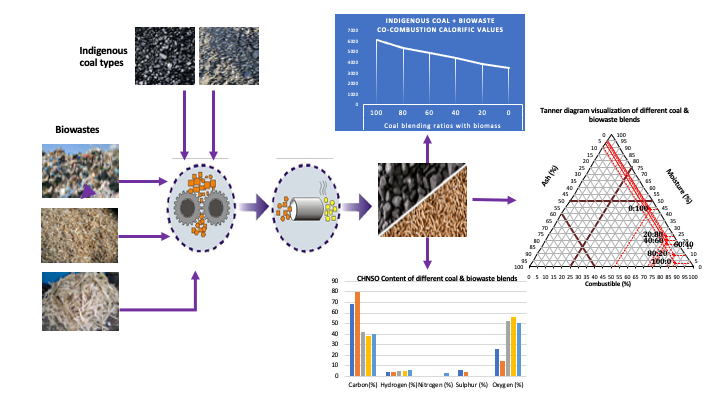
Severe energy crisis and vilest economic conditions in Pakistan demand the country’s energy portfolio to be revised with increased reliance on indigenous energy resources. The perspective of utilization of abundantly available biomass waste fractions as a fuel alone and their co-combustion with two different indigenous coal varieties has been emphasized in this study. Coal samples were blended with the organic fraction of municipal solid waste, rice husk and sugarcane bagasse waste fractions in varying ratios of 20%, 40%, 60% and 80% and the resulting variation in their fuel characteristics and co-combustion efficiency was determined. The execution is a basis to assess the assumption that co-combusion in appropriate proportions can arrange a solution for the massive amounts of produced organic waste and cut dependency on imported energy sources. The tanner diagram visualization for the assessment of proposed blends suggest that the blending samples exhibit an increase in moisture and combustible content while some decrease in ash content and calorific values with increased biomass ratios. Within the assortment of conducted trials, khaushab coal and rice husk in various proportions evidenced to be the best arrangement for fuel consumption based on energetic optimization. The overall results of studies inferred that both coal and biomass fuels alone and their co-firing can sustain self-combustion and subsequently arrange for finding area based solutions related to various energy operations.
Total file downloads: 3